One Picture-Book Roundtable Discussion Before Breakfast #3: Featuring Granny Clearwater’s Ladies
 February 7th, 2011 by jules
February 7th, 2011 by jules
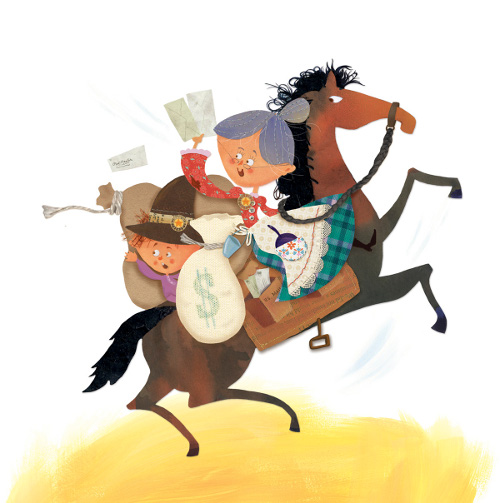
Welcome to my third picture-book roundtable discussion, in which the author, illustrator, editor, and art director/book designer are on deck to give me and 7-Imp readers varying perspectives on one picture book title. Today’s picture book is The Adventures of Granny Clearwater & Little Critter (Henry Holt/Christy Ottaviano Books, October 2010), which means that today I welcome author Kimberly Willis Holt (whom I once interviewed back in 2007, during the era in which images at 7-Imp were tragically small) and illustrator Laura Huliska-Beith, as well as the book’s editor, Christy Ottaviano, the Editorial Director of Henry Holt’s Christy Ottaviano Books, and the book’s designer April Ward. (Throw in some illustrations from Kyrsten Brooker, and you’ve got all of the ladies Granny Clearwater has, in one way or another, lured here to 7-Imp today. Granny’s sneaky like that. Sharp as a tack, that one.)
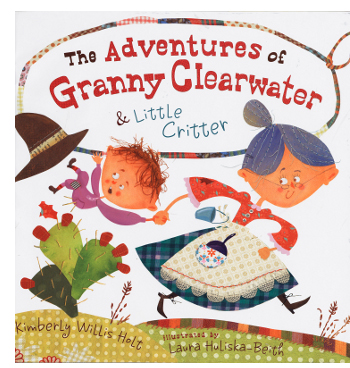 Granny Clearwater, which School Library Journal called a “rip-roaring yarn,” tells the story of the Clearwater family, who journey west in the 1800s via covered wagon, only to lose Granny and Little Critter after the wagon hits a big hole. The two head out across that “leave-your-mouth-scorching-dry prairie,” along the way fishing for food, crossing a mountain, catching Rose Rogers, stagecoach robber and bad poet (“I never could stand a bad poet,” Granny says), and much more. (Mind you, Rose Rogers “fell to the ground before you could say ‘PEANUT BRITTLE'” in a font that looks very much like…well, peanut brittle. The title page notes that Huliska-Beith used “fabric scraps, stitchery, paper, acrylics, and computer collage” to render the illustrations.) The two even become honorary deputies and deliver some mail for the Pony Express. “Rollicking,” to be sure, gets over-used in children’s book reviews, but Holt puts the very “rollick” in this tale, which bounces along with joy. “Huliska-Beith’s collages,” writes Kirkus, “are as lively, exaggerated and full of jokes as the drawling, tongue-in cheek text, extending it with word art, boxes and sidebars.”
Granny Clearwater, which School Library Journal called a “rip-roaring yarn,” tells the story of the Clearwater family, who journey west in the 1800s via covered wagon, only to lose Granny and Little Critter after the wagon hits a big hole. The two head out across that “leave-your-mouth-scorching-dry prairie,” along the way fishing for food, crossing a mountain, catching Rose Rogers, stagecoach robber and bad poet (“I never could stand a bad poet,” Granny says), and much more. (Mind you, Rose Rogers “fell to the ground before you could say ‘PEANUT BRITTLE'” in a font that looks very much like…well, peanut brittle. The title page notes that Huliska-Beith used “fabric scraps, stitchery, paper, acrylics, and computer collage” to render the illustrations.) The two even become honorary deputies and deliver some mail for the Pony Express. “Rollicking,” to be sure, gets over-used in children’s book reviews, but Holt puts the very “rollick” in this tale, which bounces along with joy. “Huliska-Beith’s collages,” writes Kirkus, “are as lively, exaggerated and full of jokes as the drawling, tongue-in cheek text, extending it with word art, boxes and sidebars.”
I thank all these ladies for stopping by to give me yet another glimpse into the picture-book process, and I turn the table over to them now…
7-Imp: What was your first impression or reaction to the Granny Clearwater manuscript? (Kimberly, you can simply address the writing of it, getting the initial idea for it, etc.)
 Kimberly (pictured left): A few years before I wrote The Adventures of Granny Clearwater and Little Critter, I wrote another picture book manuscript that was rejected. It was a homespun story about a character named Clarence Clearwater. The manuscript joined the file I kept on stories that may never see publication, but that I can’t throw away, because they are a part of my writing history.
Kimberly (pictured left): A few years before I wrote The Adventures of Granny Clearwater and Little Critter, I wrote another picture book manuscript that was rejected. It was a homespun story about a character named Clarence Clearwater. The manuscript joined the file I kept on stories that may never see publication, but that I can’t throw away, because they are a part of my writing history.
Later, I began work on a historical novel, The Water Seeker. This book required a ton of research about America settling the West. While I struggled to find my way through that book, the Clearwater name emerged from the file drawer and danced into my imagination. Soon an idea took hold of me—a family heading west across the prairie. Although the first sentence and the rhythm of the story didn’t appear on the first draft, I was excited about the idea.
Christy pointed out that the language wasn’t there yet. That observation inspired me to not hold back. Once I had the voice and tone, the structure of the story fell into place rather nicely. More fun followed with the details. I was able to use some of the facts that I’d discovered in my research but, because of the timeframe, didn’t quite work for The Water Seeker. Since The Adventures of Granny Clearwater and Little Critter was a tall tale, the story’s boundaries stretched to the horizon—catching a giant fish, a stagecoach robbery, the pony express, and panning for gold. After the manuscript was acquired by my editor, Christy Ottaviano, I decided to add author’s notes so that young readers would have a true vision of the events.
She’d learned how years ago from her ma…”
(Click to enlarge spread.)
Laura: I was so excited when I first read the manuscript! I try to suspend thoughts during my first read-through of a script so that the imagery can pour over me, like a movie. But I couldn’t help loving all the action and the colorful descriptions and situations.
 Christy (pictured right): Kimberly is one of those gifted authors whose talents stretch beyond one genre. In addition to writing novels for middle grade and young adult readers, Kimberly understands her younger audience, and I think her picture books are testament to that fact.
Christy (pictured right): Kimberly is one of those gifted authors whose talents stretch beyond one genre. In addition to writing novels for middle grade and young adult readers, Kimberly understands her younger audience, and I think her picture books are testament to that fact.
Kimberly was working on The Water Seeker—a lyrical epic novel set in the 1800s during the early days of the Oregon Trail—around the time she wrote The Adventures of Granny Clearwater and Little Critter. When she mentioned that she was sending me a picture book that dealt with the same historical time period, I imagined a serious piece about pioneer life. What a surprise it was to meet Granny Clearwater and the other larger-than-life characters in this story.
I’m a big fan of Swamp Angel (Anne Isaacs/Paul Zelinsky), {pictured below}, and have a soft spot for tall tales, so the tall tale plot complete with quirky characters and folksy language instantly won me over. There were so many wonderful illustrative moments in the text, and I immediately visualized zany illustrations with lots of movement and color. First-choice illustrator for the project — Laura Huliska-Beith.
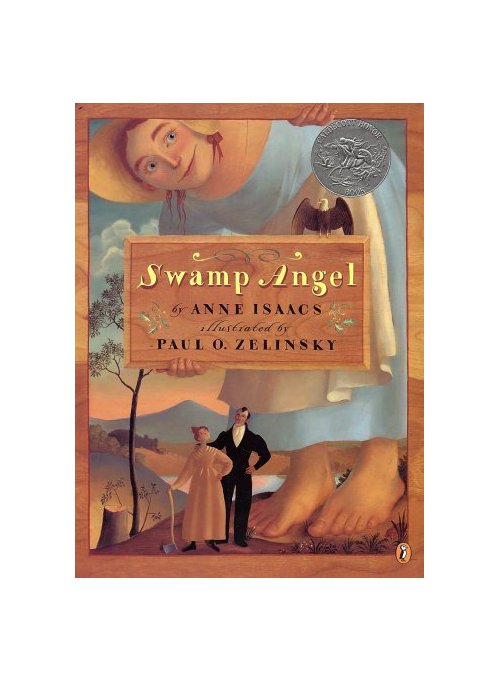
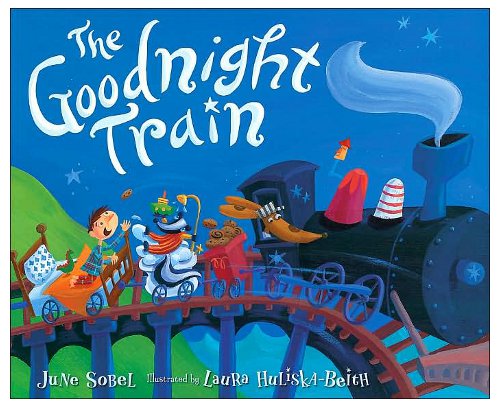
April (pictured below): I was beyond thrilled when I first read the manuscript and saw the sketches for Granny Clearwater. I’m a huge fan of Laura Huliska-Beith’s work. I had been the designer for one of her previous books, The Goodnight Train, {pictured above and written by June Sobel}, a few years back and I was excited about the prospect of working with her again. Her characters are so quirky and fun, and I absolutely love the hand-lettering that is peppered throughout her art.
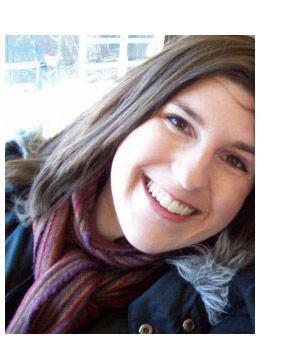 Also as a native Oregonian, I have a special place in my heart for stories about travelling west in covered wagons. Kimberly’s manuscript was right up my alley! I immediately knew that this would be a book to bring home and share with my own Granny.
Also as a native Oregonian, I have a special place in my heart for stories about travelling west in covered wagons. Kimberly’s manuscript was right up my alley! I immediately knew that this would be a book to bring home and share with my own Granny.
7-Imp: Describe a part of the Granny Clearwater process that was challenging or surprising (or both).
Kimberly: Although Laura’s art matched my words beautifully, she still managed to surprise me. The Author’s Notes should probably be called “Author’s and Illustrator’s Notes.” Her illustrations add so much and stay consistent with the humor of the text. One example is her spot art which backs up my explanation that most people walked west in the 1800s. Laura created a pioneer girl and boy walking slump-shouldered with their tongues hanging. The words above them: “Are we there yet?” My pal, Kathi Appelt, summed up our collaboration best. She said, “Kimberly, you can tell Laura enjoyed working on this story as much as you did.” That’s the best kind of collaboration.
Laura: My problem, when I started sketching, was deciding which scenes to actually illustrate—there was so much visual imagery I had to figure out which scenes would move the story forward and which scenes could become spot illustrations. Don’t get me wrong, this is a good problem for an illustrator to have! Another challenge was trying to figure out the whole “look” of the book. My normal painting style wasn’t doing it justice. The story needed more ingenuity (like Granny herself possessed!). That’s when I started combining sewing, painting, computer, and even a little cooking (the peanut brittle). I knew it was working for me when I started having fun!
Also, even though it may not look like it, this book required quite a bit of research for me. I traveled to the Pony Express Museum in St. Joe (very close to Kansas City), took photos, and consulted various books and internet sites for information.
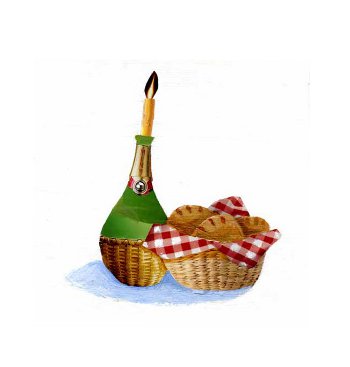 Christy: Long-time friend and author, Laurie Keller, had introduced me to Laura Huliska-Beith several years prior to my receiving Kimberly’s manuscript. I had been trying to find the right story that could really showcase Laura’s sensibility and inventive art style. It was my Archimedes “eureka” moment when I read Kimberly’s manuscript — instantly I thought of Laura; at long last, I had the perfect project for her. Early on, Laura and I spoke about finding the right look for the main characters. To that end, Laura worked on many thoughtful character studies in order to truly capture the personalities of Granny and Little Critter. Is she wild enough? Does her hair look too old-lady-ish? Is he young enough, cute enough, and so on. I really love how these characters turned out — spunky and sweet and full of fiery spirit. I remember wanting Little Critter to have more time on stage, so to speak, given that his character is so charming. Kimberly went back into the manuscript and gave more focus to his role in the story. In this way, she made Granny and Little Critter function more as a team, and this, I think, makes you love them equally. Little Critter also offers a child entry point which I feel is an important element in reaching your young reader.
Christy: Long-time friend and author, Laurie Keller, had introduced me to Laura Huliska-Beith several years prior to my receiving Kimberly’s manuscript. I had been trying to find the right story that could really showcase Laura’s sensibility and inventive art style. It was my Archimedes “eureka” moment when I read Kimberly’s manuscript — instantly I thought of Laura; at long last, I had the perfect project for her. Early on, Laura and I spoke about finding the right look for the main characters. To that end, Laura worked on many thoughtful character studies in order to truly capture the personalities of Granny and Little Critter. Is she wild enough? Does her hair look too old-lady-ish? Is he young enough, cute enough, and so on. I really love how these characters turned out — spunky and sweet and full of fiery spirit. I remember wanting Little Critter to have more time on stage, so to speak, given that his character is so charming. Kimberly went back into the manuscript and gave more focus to his role in the story. In this way, she made Granny and Little Critter function more as a team, and this, I think, makes you love them equally. Little Critter also offers a child entry point which I feel is an important element in reaching your young reader.
as he watched his family’s wagon disappear from the horizon.”
(Click to enlarge spread.)
April: The challenge for me with Granny Clearwater was in choosing a type style that had enough character to complement the artwork, while maintaining readability over textures. Initially, I thought a font with an old west flair would be fun, but those slab serifs tend to be too bulky when there is a good amount of text on the page. I ended up using a font called Cafeteria for the interior type, which is slightly condensed and playfully irregular, along with a chunkier type for the title, called Way Out West.
7-Imp: How did the finished book vary or evolve from your initial vision of the book?
Kimberly: For me, working on the manuscript was pure-d fun. I wrote it about a year before I sent it to Christy. During that year, I pulled it out from time to time and revised. Every year, I attend a writing retreat at Kathi Appelt’s family ranch with her, Jeanette Ingold, Rebecca Kai Dotlich, and Lola Schaefer. On that first writing retreat, I showed the story to them. They offered excellent input. After the retreat, I polished the story again and sent it off.
(Click to enlarge.)
In the original draft, Little Critter grows up before the family meets up with him and Granny. Christy believed it was important that he remained a child and the time away from the rest of his family was fairly short. I agreed. Besides, this was a tall-tale. Anything could happen.
There were more revisions, but nothing that amounted to major surgery like most of my other books. It’s too bad the process isn’t always like that, but then maybe we sweat over most of our work so that sometimes we receive a little gift.
Laura: See my above response!
 Christy: I knew Laura loved to work in mixed media, and I told her from the get-go that she could experiment all she wanted when it came time to creating the artwork. One day I received a package from her with some interior sketches from the book, and there was a little note to me with an embroidered Granny Critter sewn right into the letter. I absolutely loved it and called Laura to thank her. She went on to tell me that she planned to incorporate this technique into the collaged images. My favorite parts of the artwork are those sewn-in touches — they add so much to the overall texture of the spreads. I also think the idea of sewing ties in nicely with the underlying theme of the story — the subtle message of an older generation passing down talents and special gifts to a younger generation. Didn’t we all learn the basics of sewing from either our mother or grandmother? I sure did.
Christy: I knew Laura loved to work in mixed media, and I told her from the get-go that she could experiment all she wanted when it came time to creating the artwork. One day I received a package from her with some interior sketches from the book, and there was a little note to me with an embroidered Granny Critter sewn right into the letter. I absolutely loved it and called Laura to thank her. She went on to tell me that she planned to incorporate this technique into the collaged images. My favorite parts of the artwork are those sewn-in touches — they add so much to the overall texture of the spreads. I also think the idea of sewing ties in nicely with the underlying theme of the story — the subtle message of an older generation passing down talents and special gifts to a younger generation. Didn’t we all learn the basics of sewing from either our mother or grandmother? I sure did.
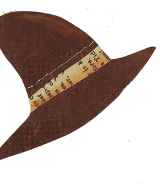 April: With all of Laura’s rich backgrounds and fun textures throughout the book, I didn’t initially envision a white cover. Once we began playing with the cover layouts and trying different options, it was clear that the image of Granny and Little Critter worked beautifully when slightly enlarged on the crisp white. The details are accentuated with that contrast, like the threads that define Granny’s hair and the newspaper clipping in Little Critter’s hat band. I love how clean the final package looks — and playful, too!
April: With all of Laura’s rich backgrounds and fun textures throughout the book, I didn’t initially envision a white cover. Once we began playing with the cover layouts and trying different options, it was clear that the image of Granny and Little Critter worked beautifully when slightly enlarged on the crisp white. The details are accentuated with that contrast, like the threads that define Granny’s hair and the newspaper clipping in Little Critter’s hat band. I love how clean the final package looks — and playful, too!
7-Imp: What’s next for you?
Kimberly: Piper Reed, Rodeo Star (Piper Reed #5) comes out this spring and next year another picture book, Dinner with the Goldsmiths. This story is a quirky look at table manners.
Laura: I have a few ideas for picture books of my own that I am working on, plus some three-dimensional artwork projects, and I am preparing for some school visits this winter. It’s nice to juggle a few things at once. If I get stuck on a problem, I can move to another project and let the answers surface, while I’m not looking.
Christy: Kimberly’s next picture book is Dinner with the Goldsmiths, illustrated by Kyrsten Brooker. The story is about a playdate that goes a bit awry. It’s full of kid-loving chaos, and the art captures the rowdiness and off-the-wall humor to a T. I just love it and can’t wait to see it published. That’s forthcoming in 2012.
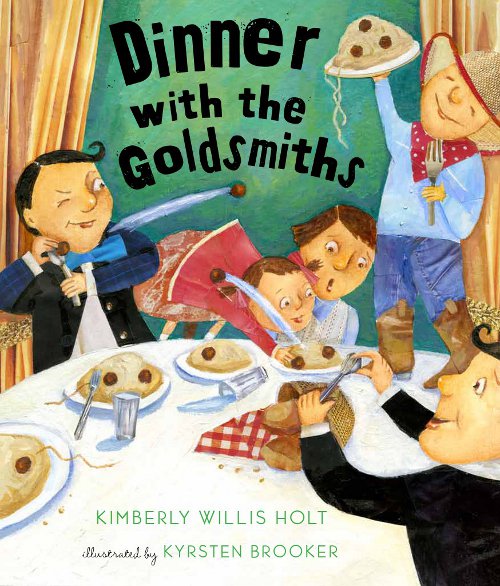
as the type will be in color.)
‘Ooops!’ Little Melly giggled.”
(Click to enlarge spread.)
April: I just finished a really fun re-packaging of Kimberly Willis Holt’s Piper Reed series in paperback {pictured below}, and now I’m working on a series design for new YA series about time travel! The first book in the series is Ruby Red, and it will hit stores this spring.
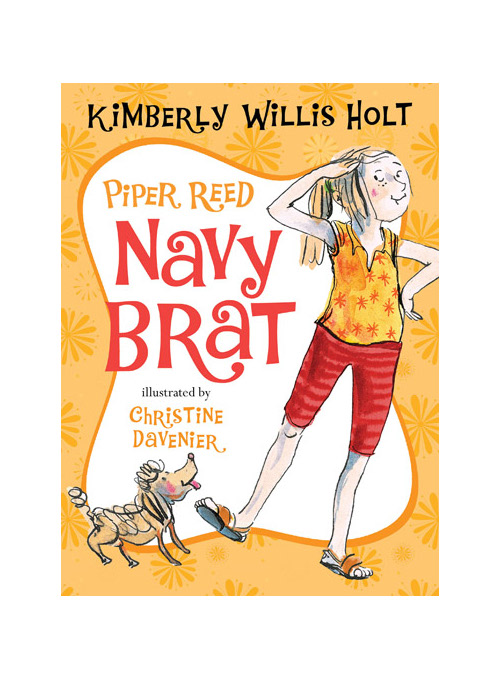
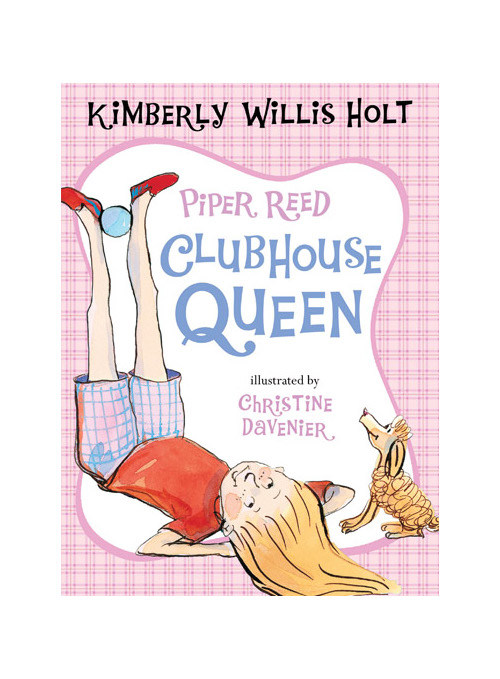

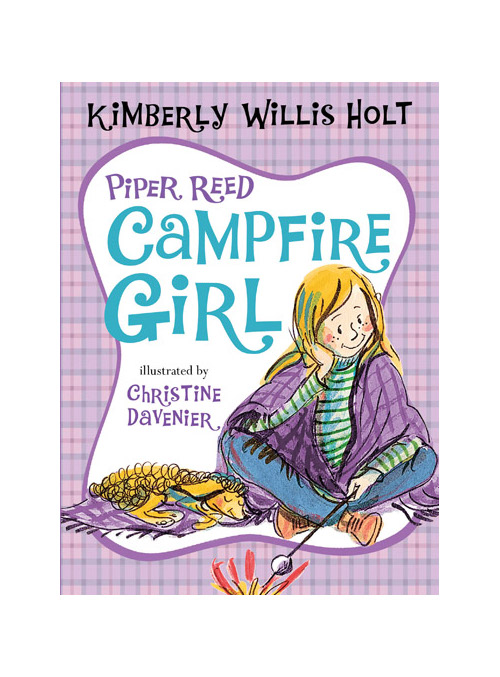
THE ADVENTURES OF GRANNY CLEARWATER & LITTLE CRITTER. Copyright 2010 by Kimberly Willis Holt. Illustrations © 2010 by Laura Huliska-Beith. Published by Henry Holt and Company, New York, NY. All illustrations used with permission of illustrator.
Images from the Piper Reed titles and Dinner with the Goldsmiths used with permission of Christy Ottaviano.
Sketches from Laura Huliska-Beith used with her permission.
Photos of Ms. Holt, Ms. Ottaviano, and Ms. Ward used with their permissions.
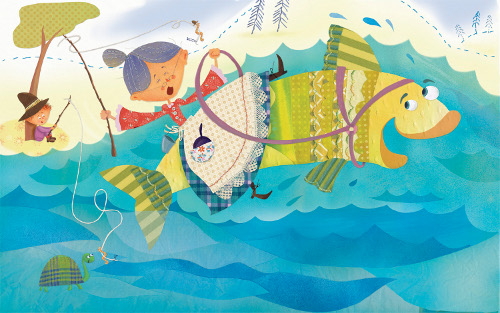
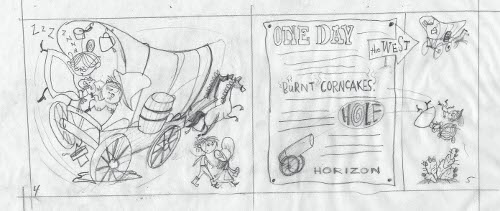
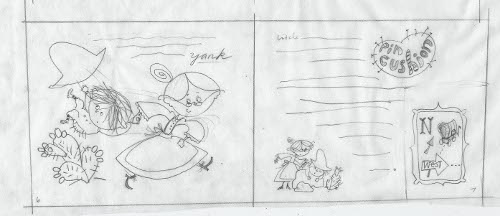
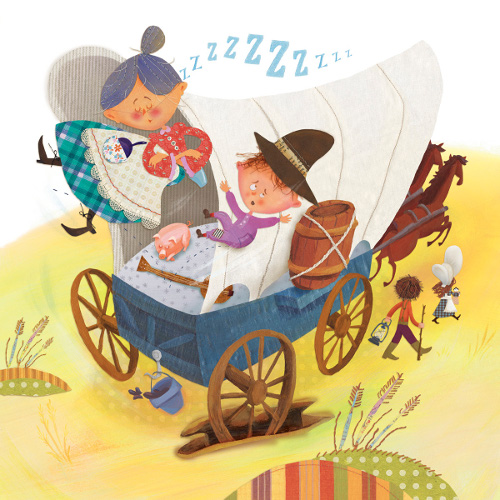
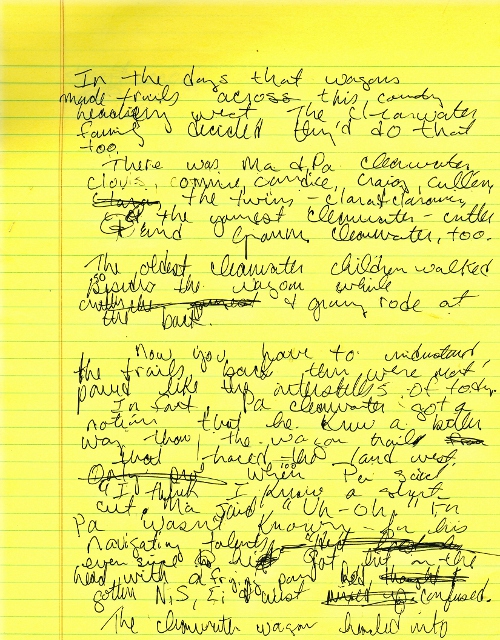
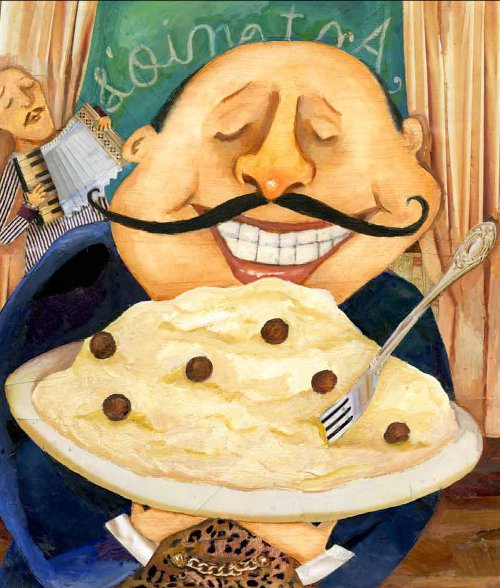
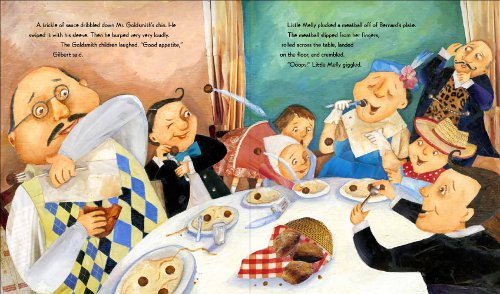

[…] Seven Impossible Things Before Breakfast » Blog Archive » One Picture-Book Roundtable Discussion B… blaine.org/sevenimpossiblethings/?p=2075 – view page – cached Welcome to my third picture-book roundtable discussion, in which the author, illustrator, editor, and art director/book designer are on deck to give me and 7-Imp readers varying perspectives on one picture book title. Today’s picture book is The Adventures of Granny Clearwater & Little Critter (Henry Holt, October 2010), which means that today I welcome author Kimberly Willis Holt (whom I once… Read moreWelcome to my third picture-book roundtable discussion, in which the author, illustrator, editor, and art director/book designer are on deck to give me and 7-Imp readers varying perspectives on one picture book title. Today’s picture book is The Adventures of Granny Clearwater & Little Critter (Henry Holt, October 2010), which means that today I welcome author Kimberly Willis Holt (whom I once interviewed back in 2007, during the era in which images at 7-Imp were tragically small) and illustrator Laura Huliska-Beith, as well as the book’s editor, Christy Ottaviano, the Editorial Director of Henry Holt’s Christy Ottaviano Books, and the book’s designer April Ward. (Throw in some illustrations from Kyrsten Brooker, and you’ve got all of the ladies Granny Clearwater has, in one way or another, lured here to 7-Imp today. View page […]
Yay for Granny Clearwater! Or should I say, Giddyup? I saw Laura and Kimberly give a talk at the Plaza Library in Kansas City. They were great! And I love the collage art in this book.
Beautiful way to show the triangular collaboration.:)
Loved this. Hope it gets read widely since I can’t imagine it won’t educate any new writers/illustrators/designers/editors.
In fact, you should gather a bunch of these in a book and become the new Leonard Marcus. (Not that’s he’s old, of course!)
Jane
I love your “round-up” of how this book is made! It is fascinating to see the books progress from all of the different angles. Thank you!
i loved hearing Kimberly, Christy, April and Laura’s unique perspective on this book. no wonder this book is as great as it is, with this much talent going into it from every angle! thanks for these inspiring interviews!
Thanks, all. They’re fun to do.
Jane, gasp gasp gasp. It is an honor for you to even mutter my name and Leonard Marcus’s in the same sentence.
[…] on one picture book title. I’ve only done three of these, though I really do enjoy them, and the last one was back in 2011. Wow. It’s been a […]